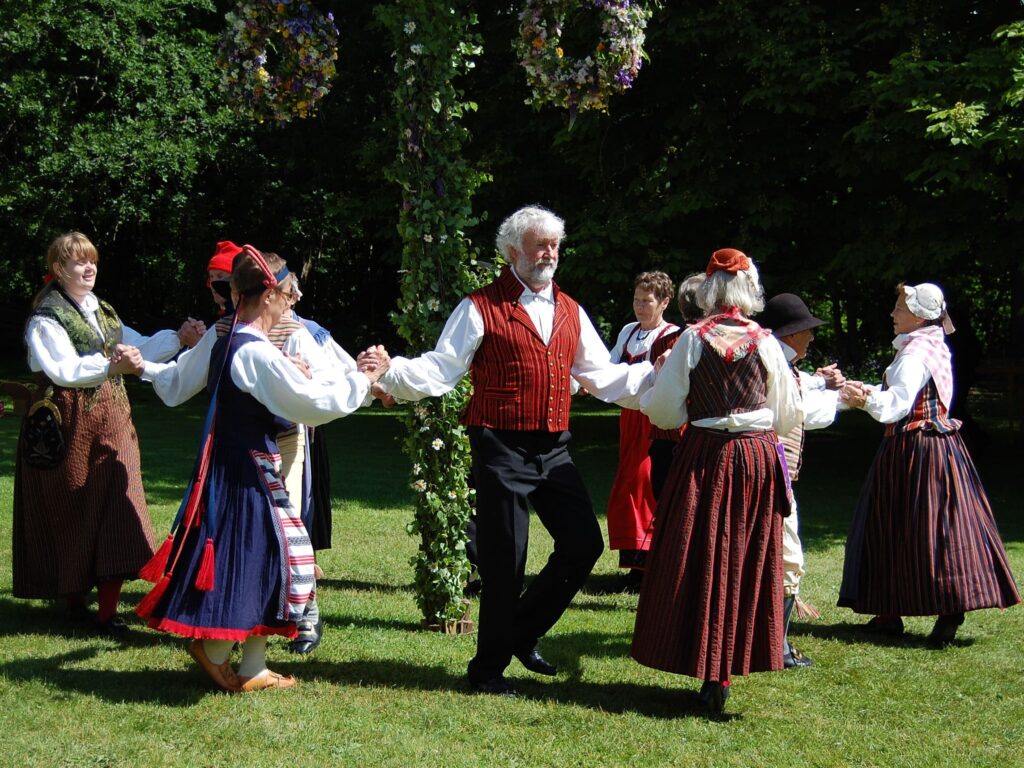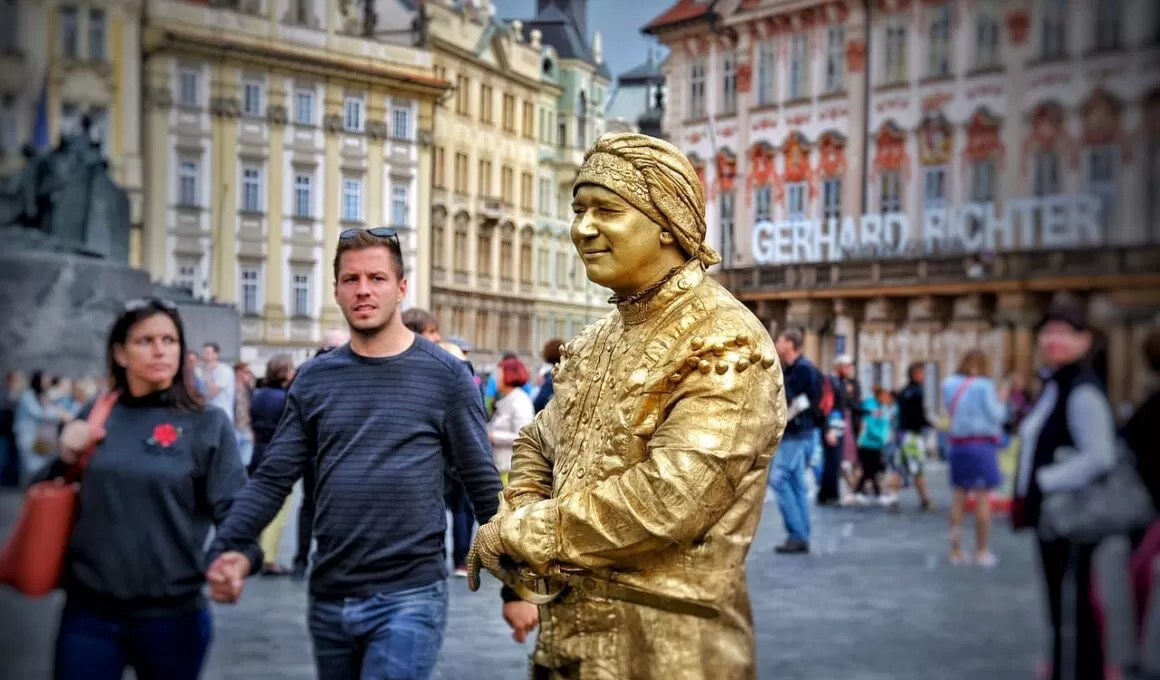Table of contents Show
What do Czech people look like? Because of historical and geographical circumstances, Czech people, as any other population, have a varied spectrum of physical looks. Explore the topic of “What do Czech people look like?” with us. It aids in determining how to communicate effectively with Czechs.
Czechs, the common name for the inhabitants of the Czech Republic, show a wide range of physical characteristics that have been molded by historical, cultural, and genetic factors. While broad generalizations about any group should be avoided at all costs, it is possible to draw some conclusions about the Czech people.
The Czech people are easily identifiable by their distinguishing physical features, which include fair to medium skin, outstanding heights, and lean builds. The world at large finds their stunning physical features to be beautiful. Their women, for example, have the face of a dream girl, according to a global poll.
A primer on Czech male names and Prague’s people, for a deeper understanding of the city and its culture.
People in Prague tend to share similar values and lifestyles. The vast majority of the people living there are Czech. However, there is a sizable Slovak minority.
But what are the inhabitants of Prague called? The Czech people, sometimes known as the Czechs, are the inhabitants of Prague, the Republic of the Czech, located in Central Europe. They are the West Slavic Prague population with a common linguistic and cultural heritage.
The central location of the Czech Republic in Europe, the impact of its neighbors, the upheavals of politics and society, and the ups and downs of peace and conflict have all left their marks on the culture of people in Prague. Prague’s status as a significant cultural hub in Europe fluctuated over the course of history, but the country’s unique culture has endured.
The Origins of Ethnicity and Culture of the People in Prague
The people in Prague are ethnolinguistically and culturally Slavic, specifically West Slavic.
When East Germanic peoples fled Central Europe over the migration era, early Slavic tribes moved in. These people eventually became known as the West Slavs. The Czechs, a West Slavic people, arrived in the Bohemia region during migration and absorbed the region’s remaining Celtic and Germanic inhabitants. Under Svatopluk I’s reign, the region now known as the Duchy of Bohemia was established.
Forefather Čech is credited in folklore as the one responsible for relocating the Czech people to their current homeland.
The Czech people have deep ties to their Slovak neighbors, with whom they formed Czechoslovakia between 1918 and 1992.
The Czech and Slovak languages are not entirely separate from one another but rather exist on a continuum of dialects. It is widely acknowledged that Czech culture has had a far greater impact on Slovak culture than vice versa. The Slavic Czechs have lived peacefully alongside the Germanic peoples for centuries.
The German language replaced the Czech language in regional and local administration in the seventeenth century. The upper classes in Bohemia and Moravia became Germanized and adopted a political identity, but the poor and middle classes retained their Czech ethnic identity. In the 18th and 19th centuries, the Czech National Revival occurred with the goal of reinvigorating Czech life and identity. Pan-Slavism had its origins in Czech politics.
Historically, the region presently referred to as the Czech Republic was called Bohemia. Despite its small stature, its history is long and eventful.
Exploring Czech Ancestry through Genetic and ethnicity traits

The Czech ethnicity traits have developed from a complex interplay of genetic markers and ethnic factors, which can be looked into by those of Czech ancestry. While DNA testing might shed light on ancestry, learning about Czech ethnic features requires knowledge of the many cultural forces that have shaped the country. Interactions with surrounding Slavic, Germanic, and various other Central European communities have had a profound impact on Prague fascinating facts and the country’s rich culture.
Language and Linguistic Roots
As a West Slavic language, the Czech language serves as an important cultural indicator. By delving into its etymology, we can learn how Czech emerged from other Slavic languages and gain perspective on its evolution over time.
Folklore and customs
Individuals can get insight into their Czech roots by studying traditional customs, folklore, and rituals. Czech folk music, dancing, and celebrations all reflect the nation’s history and culture.

Regional Impact
The Czech Republic’s geographical spread has played a role in regional variances in culture and traditions. Exploring one’s Czech roots might be enriched by learning more about the region where one’s ancestors originally came from.
What Do Czech People Look Like? Challenging Common Czech Stereotypes
Breaking down preconceptions and acknowledging the diversity among the Czech community makes the question of what do Czech people look like? Many common Czech stereotypes are oversimplified and sweeping, failing to account for the wide variety of physical traits that make up the Czech population. To examine this topic, it’s vital to understand the diversity in physical features, cultural influences, and historical aspects that define the Czech genetic traits.
Height above average
Czechs make up the world’s tallest people, placing in the top ten.
The average height of a man is an astounding 180 centimeters (5 feet, 11 inches), while a woman is about 166 centimeters (5 feet, 5 inches).
Since the Czechs were rated 24th in height a century ago, this is a significant development.
A slim build
The Czech people are known for their slim physiques. It could be because Czechs are known for their active lifestyles.
They enjoy being outside and may frequently be spotted doing things like hiking in the mountains, skiing in the winter, or swimming in the summer.
Many women attribute their athletic hips and bust lines to this factor. Muscular arms and legs are another common effect of such an active lifestyle.

Light to medium complexion
Czechs are renowned for their light, radiant complexion that comes from the country’s mild climate, yet it’s not unusual for them to be sunburned during the long summer days.
In addition, Czech women take excellent care of their skin, often resorting to homemade creams as part of their everyday beauty routine.
Hair color: Brown
Some Czechs might have black or dark brown hair, although the majority have pale brown hair with darker highlights.
Czechs have a preference for blond hair despite the fact that brown hair is the most common.
Many Czechs have fiery red locks, and about 12% of the population sports silvery white hair.
Have a strong facial structure
High cheekbones, big lips, a strong chin, and well-shaped eyebrows are common features among Czechs.
An international dating website even polled its users and found that women from the Czech Republic best exemplified the ideal woman.
It was determined that the people of the Czech Republic, Sweden, and the Netherlands all had the most attractive faces because of their symmetrical features, strong jawlines, and prominent cheekbones.
Unveiling Czechoslovakian Women’s Traits
Czechoslovakian women, noted for their unusual blend of resilience, intelligence, and cultural richness, exemplify a set of characteristics that reflect the region’s specific history and culture. While it is critical to note that Czechoslovakia no longer exists as an autonomous state and that the Czech Republic and Slovakia constitute distinct entities, knowing the historical context helps reveal the Czechoslovakian woman traits.
- Self-sufficiency and resilience
- Educational excellence has given them power
- Cultural appreciation manifested via festivities, festivals, and a strong connection to local traditions.
- A strong work ethic
- Family values
- An open mind and a progressive outlook.
- Natural Beauty and Fashion Sense
- Sporting Enthusiasm in a variety of sporting events
Understanding Czechoslovakian Men’s Characteristics
Czechoslovakian men, influenced by a history of cultural richness and endurance, possess specific features that reflect the region’s particular culture.They are as follows:
- Resilience and a stoic demeanor
- Intellectual curiosity
- Cultural pride
- Professionalism and work ethics
- A passion for sports
- Values of the family
- Friendly and open-minded
- Appreciation for Nature
- Sense of humor
FAQ
Global influences and intercultural exchanges have increased diversity, reflecting various ancestries and cultural impacts within the Czech population.
Subtle regional differences might exist due to historical migrations and local ancestries, though they are generally minor.
There are variations influenced by historical interactions with Slavic, Germanic, and other European groups, reflecting a diverse genetic heritage.
Czech cultural events likely embrace and showcase a spectrum of styles and physical features, celebrating both tradition and modernity.
Evolving Czech beauty standards are shaped by media, global trends, and cultural exchange, reflecting a dynamic view of aesthetics.





